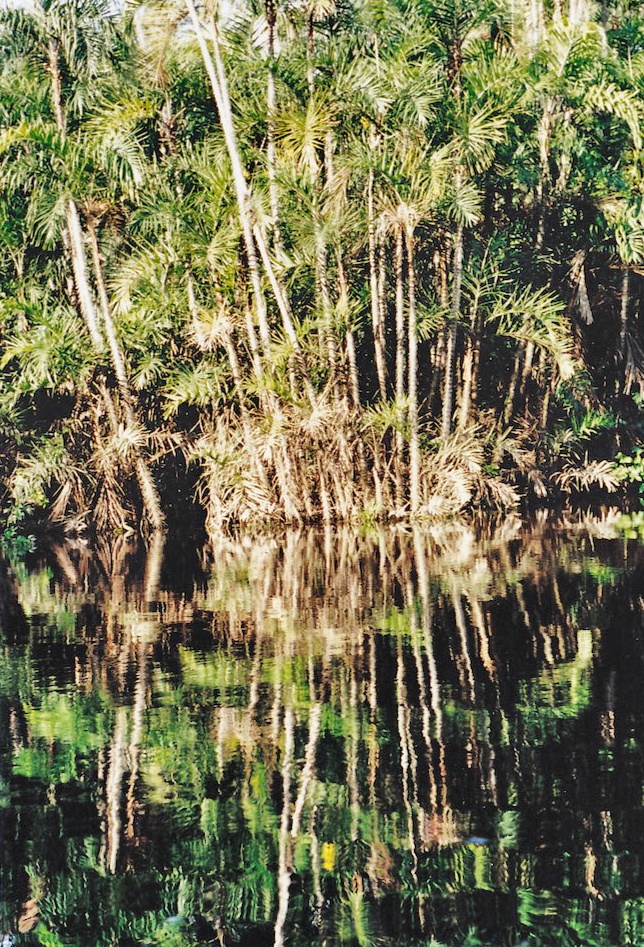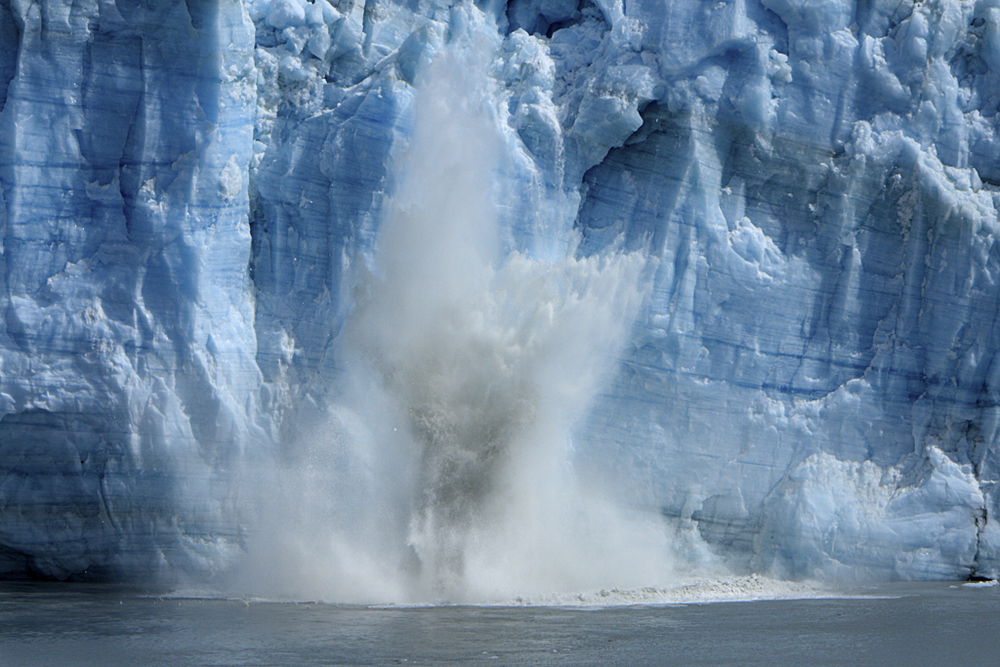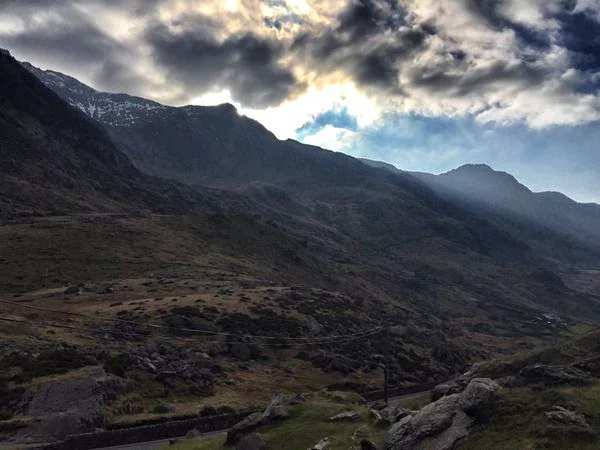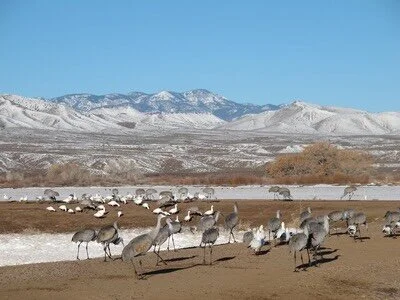Join Richard Collins on a journey through the Pyrenees as he reflects on encounters with elusive wildlife and contemplates the paradox of experiencing versus documenting moments. Delve into the tension between fully immersing oneself in an experience or capturing it from a removed vantage point.
All tagged nature
What is Your Heart Made Of?
Regular hikes in nature are an essential component of Nancy King’s well-being. Being in nature helps her to connect to herself and to heal the wounds of childhood trauma. But winter hikes, slogging through deep snow, one foot in front of the other, are exhausting. What kept her going this past winter was finding something she’d never seen before—snow and ice hearts. The more she hiked, the more heart stones she saw, and the more she saw, the more her heart healed.
Chasing Northern Lights across Finnish Lapland
A winter adventure to view the Aurora Borealis in Finland revealed uncomfortable emotions for author Elyn Aviva when nature’s most spectacular light show wasn’t quite what she’d expected.
Wales Without WiFi
When writer Joe Shaw, a hyperconnected traveler, arrived in Snowdonia National Park in north Wales, he discovered epic landscapes, adventurous travelers, a dazzling night sky, but no phone or internet service. None. Zip. Nada. Dream getaway or vacation nightmare?
Written in Stone
A visit to Arches National Park inspires this reflective essay on the powers that shape, pare, trim, and mold this unique region of the American Southwest and the relationship to how time molds our eroding bodies and identies.
Bhitarkanika Sanctuary: An Indian Getaway Into the Wild
The darkness of the night and the troublesome roads were worrisome, and at first it was a relief to get out of the car, but then the destination itself proved to be a scary proposition. Our ferry in the moonless night looked sinister. And when we thought about the fact that we had entered the terrain of ferocious crocodiles, the scene in front of me seemed straight out of the famous Anaconda movies. The lone lantern lighting the boat and the stillness of the water around us felt menacing. At first, most of us laughed to ward off our fear.
And then none of us spoke. Did we fear waking the reptiles? I do not quite know for I had become too numb to think coherently. Do not mistake me; I am not one of those who succumbs to fear very easily. But when it came to the prospect of being eaten by crocodiles, my mind became my own worst enemy. I kept repeating to myself that the creek was full of salt water crocodiles and I kept replaying the visuals of the Anaconda movie. In retrospect, and with objectivity, I can say that the boat ride was actually peaceful and serene.
What is land? Land can have many different meanings. Land can mean wealth, profit, prosperity, privilege, prestige, power, control, status, accomplishment, satisfaction, success, fame, respect, honor, dignity, safety, security, stability, continuity, contentment, freedom, happiness, hope, joy, beauty, love...
Land, for most people of the world, means wealth. Wealth, like beauty and love, is in the eye of the beholder.
story and photos by Lori Marquardson
So many reasons for going to Ecuador, but being stuck on a bus full of local Evangelical Christians in a mudslide was not one of them. Sometimes you just have to go with the flow.
I had been backpacking alone through Ecuador and, deciding that a few days exploring the Amazon jungle was in order, made arrangements to meet up with a small group in the dusty oil frontier town of Lago Agrio. From there we would go to the Cuyabeno Nature Reserve for a few days of roughing it with iguanas, howler monkeys, piranhas and blue morpho butterflies.
 River reflections, Cuyabeno Nature Reserve, Ecuador.
River reflections, Cuyabeno Nature Reserve, Ecuador.
A cool drizzle fell as I boarded the overnight bus in Quito. The driver’s personal touches of green fringe and dangling images of saints above the steering wheel couldn’t mask that the bus was more contraption than road-worthy vehicle. My fellow passengers were mostly short and dark, with a number of women wearing the typical Andean dress of black bowler hats, full skirts and rubber sandals while I, the obvious foreigner on board, sported beige zip-off pants and a purple windbreaker. We headed northeast, following the twisting mountainous roads leading out of the city, and despite the jolting motion, I drifted off.
At some point, I came to: the bus was not moving, no engine running, nada. I could see the driver had relaxed into what was definitely a non-driving position: head tilted back, mouth agape, arms crossed over his chest, and legs spread-eagled. Strange, but having been in South America for quite some time, I had experienced unexplained delays before and generally they weren’t show-stoppers, so I tried to fall back asleep. Then came a huge rumble outside, followed immediately by murmuring voices inside.
“What the hell is that?” I said to no one in particular and, being in the front row, I leaned over to the driver, and asked “¿Qué está pasando? “
“Hay un derrumbe.” A landslide. Hmmm, that did not sound good.
The Bosque Is For The Birds
words + photos by Laurie Gilberg Vander Velde
“Maybe I will go to the car and get my tripod,” I said to my husband. We were at the edge of a mostly frozen pond, standing on snowpack, bundled up against the 19 degree cold in the pre-dawn dark. A glimmer of light was starting to show in the sky. We had staked out a spot in the line of tripod-wielding photographers with their mega-humongous lenses We were all waiting for the awakening snow geese and sandhill cranes to perform their morning “fly out.” We were at Bosque del Apache, a National Wildlife Refuge near San Antonio, New Mexico about an hour south of Albuquerque. It’s a place known to many serious bird watchers who throng to the area in the winter to watch thousands and thousands -- and thousands of snow geese and sandhill cranes come and go.
 We are not avid birders, nor am I a zealous photographer. How could I be? I love taking pictures and dabble in PhotoShop, but I tote a point-and-shoot camera. It’s top of the line and somewhat flexible, but it’s still a point-and-shoot, and the SLR crowd look at me with some disdain. Much as I would love to use a digital SLR and be able to change lenses, my body just can’t schlepp that much weight. And my husband, despite my batting my eyelids at him, has turned me down flat. It was hard not to be intimidated by the very serious looking phalanx of expensive equipment lined up on tripods waiting for “the moment.”
We are not avid birders, nor am I a zealous photographer. How could I be? I love taking pictures and dabble in PhotoShop, but I tote a point-and-shoot camera. It’s top of the line and somewhat flexible, but it’s still a point-and-shoot, and the SLR crowd look at me with some disdain. Much as I would love to use a digital SLR and be able to change lenses, my body just can’t schlepp that much weight. And my husband, despite my batting my eyelids at him, has turned me down flat. It was hard not to be intimidated by the very serious looking phalanx of expensive equipment lined up on tripods waiting for “the moment.”
Our home is now in Santa Fe, so we made the easy two plus hour drive to the Bosque (means “forest” in Spanish) the night before, aiming to get there in late afternoon in hopes of seeing the “fly in.” This is the time during the golden hour before the sun sets and the moments after sunset when tens of thousands of snow geese and sandhill cranes fly in. A foot of snow had closed the refuge a couple of days before, but the plows had sort of cleared the roads. The observation decks were still snow covered. The big problem was that there were limited areas of open, unfrozen water in the ponds, and the birds want to land on open water where they are safer from predators. The helpful folks at the visitors’ center can tell you where the birds landed the night before, but the birds don’t file a flight plan, so we can only guess where they might land tonight.
My personal Glacier Bay
Roar. We heard an earthquake-like rumble.
 In Glacier Bay, an enormous, luminous, turquoise chunk sheared off the icepack and dropped in the water. The Grand Pacific Glacier calved before our eyes, as it had for John Muir on his Voyages of Discovery into Southeast Alaska. While Muir traveled by dugout canoe with the Tlingit Indians, we cruised on a small tour boat with a National Park Service naturalist.
In Glacier Bay, an enormous, luminous, turquoise chunk sheared off the icepack and dropped in the water. The Grand Pacific Glacier calved before our eyes, as it had for John Muir on his Voyages of Discovery into Southeast Alaska. While Muir traveled by dugout canoe with the Tlingit Indians, we cruised on a small tour boat with a National Park Service naturalist.
“Mom, it’s awesome!” Ben said. I shrugged as if to say he could find a better word. He answered, “Okay! It’s glorious!” My fourteen-year-old’s eyes sparkled with a three-year-old’s look of wonder. The weary look born by too many video games slipped away.
Whoosh. Waves caused by the crashing ice rocked our ship. Silently, we exchanged wide-eyed glances. Transfixed, we feasted our eyes on the moment in time.
Whirr. A chill wind whisked off the glacier, swept through our layers of tee-shirts, wool sweaters, and windbreakers, brushed and reddened our faces.
Life stopped in Glacier Bay in the ice age. Rivers that once cascaded to the Pacific Ocean froze in time. These days, the aqua ice is melting.
Remember? Memory whispered, Remember how you first saw this when you were a young journalist, single, and so full of dreams? Twenty some years had passed since a pilot friend had flown me to Gustavus, sending me on my first venture into Glacier Bay. Within a few years, I married, moved to California, became a mom, created a home, and taught school. In showing Alaska to Ben, I returned to a familiar place. I realized that I had revisited it many times. Memory had been my constant companion and Glacier Bay a favorite place to travel.







